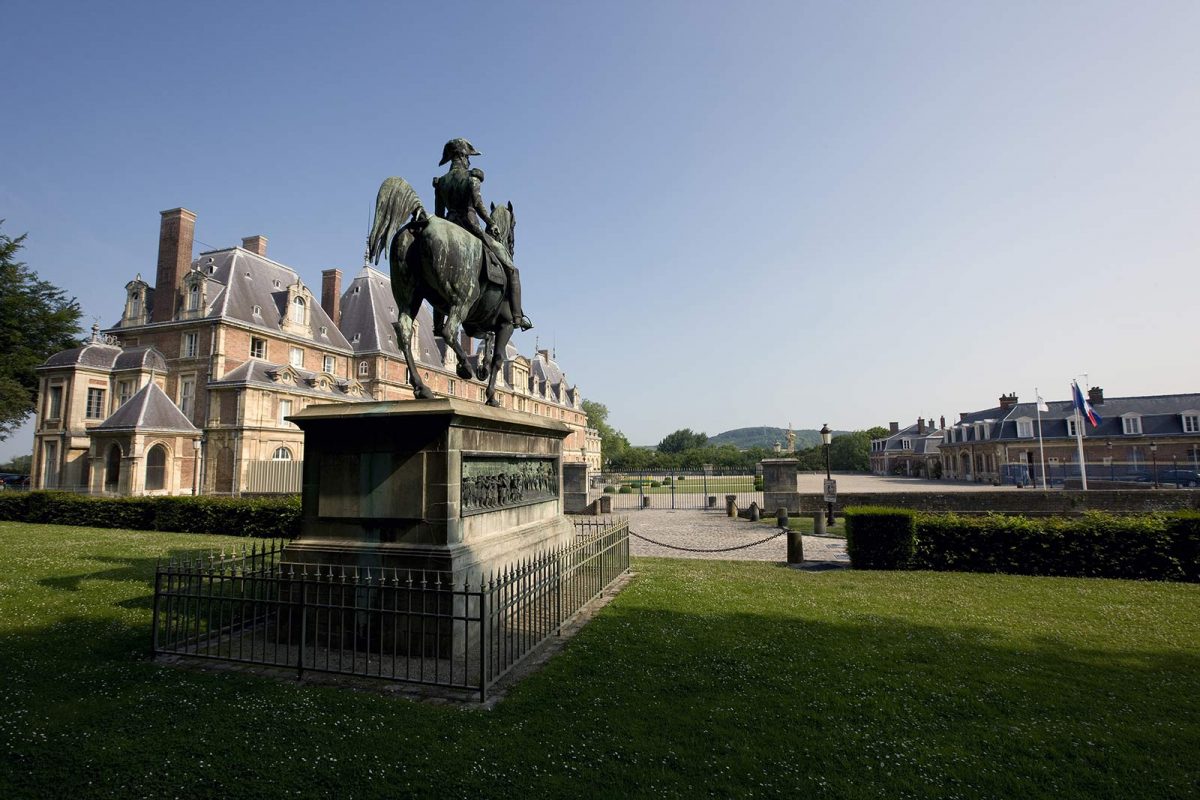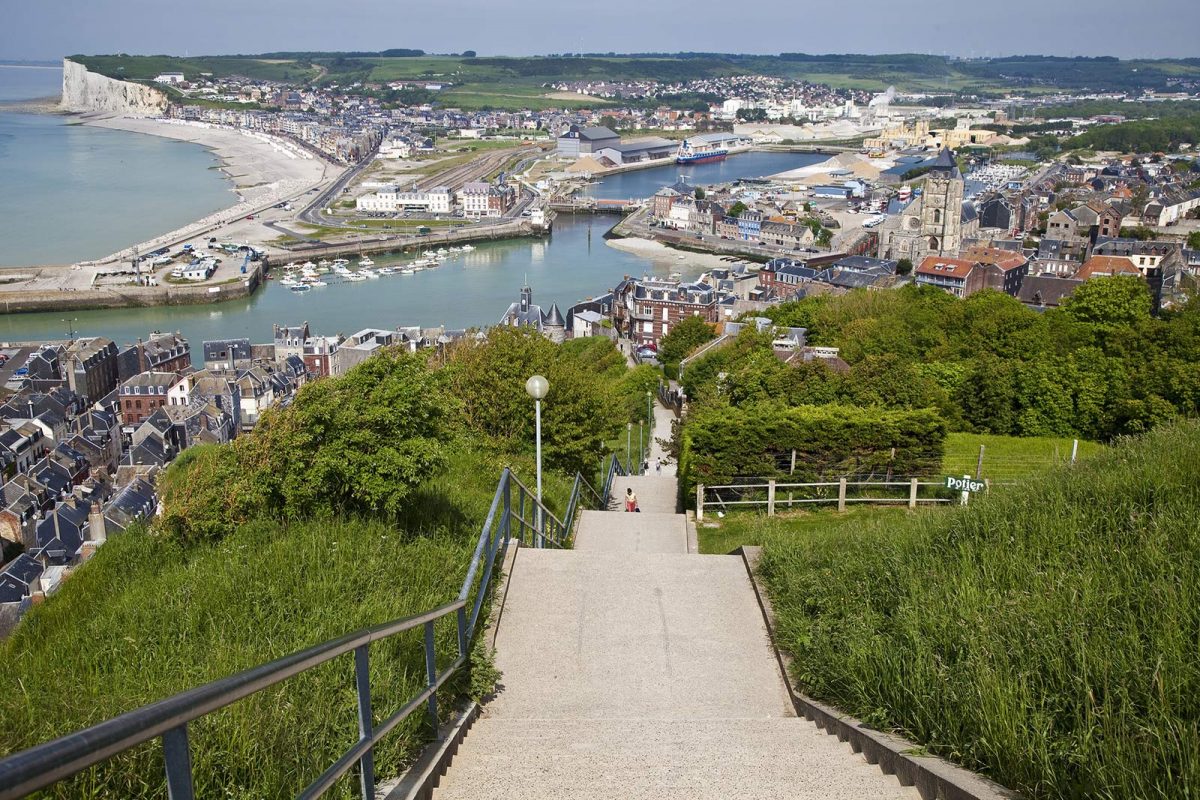Updated on 1 April 2021
Reading time: 3 minutes
Sister towns Eu and Le Tréport form the easternmost seaside resort of the Alabaster Coast and Normandy. Each of these two towns enjoys its own distinct character, atmosphere and history.
Queen vicky comes to town
Eu arguably has the longest history in Normandy besides Rouen. A former Gallo-Roman town backing onto a vast and magnificent forest, it really took off in the period of Duke Robert I, when he founded a Benedictine abbey here. To the north lay Flanders, and when in 1050, Robert’s son William the Bastard married Matilda, daughter of Baldwin V of Flanders, in the castle of Eu, a vast and powerful alliance was created.
Eu was the focus of great and wealthy families from the time of Louis XIV onwards, when it became a busy, commercial, aristocratic town, rich in its architectural heritage. One of King Louis Philippe’s favourite seaside resorts, he inherited the Château d’Eu in 1821, and warmly welcomed Queen Victoria and Prince Albert there in 1843, marking the first royal visit since 1520!
Le Tréport on the other hand has a more recent history; following the fashion of the late 19th century for sea bathing, it first prospered as a seaside resort, soon becoming a jewel of the Belle Epoque with its multi-coloured villas and bustling fishing port.
Both towns offer walking trails for visitors keen to find out more about their history with the help of ceramic plaques, or, like Queen Victoria, to eat fine food, visit the old churches and walk the fragrant rose gardens of the Château d’Eu.

Don’t miss
Collégiale Notre-Dame and the (Irish) Saint-Laurent O’Toole: A masterpiece of 13th-century Gothic architecture, it attracted the unbridled praise of Viollet-le-Duc, who declared: ‘I’ve seen bigger, I’ve seen taller, but I’ve never seen finer.’
Château d’Eu (Louis Philippe Museum): Get a sense of the daily life of this chateau’s illustrious occupants, from the time of Catherine of Cleves and Duke Henri de Guise, to Queen Victoria, King Louis-Philippe and the Grande Mademoiselle.
L’Hôtel Dieu: This building was used for over three centuries to house the sisters who worked there tending the sick. It has a U-shaped layout, is made of brick and stone, and features a unique indoor cemetery.
Chapelle Saint-Laurent: Perched on top of the hill, this chapel affords a stunning view over the sister towns of Eu and Le Tréport.
The Glassmakers’ Museum: Find out all about the history of glass-making and perfume bottle production which made this area around the Bresle valley famous.
The Eu Forest: This former royal forest extends over 23,000 acres and several stretches of woodland between the Bresle and Yères valleys. These majestic beech woods hide many myths and legends, such as druid stones that emit smoke when evil times are upon us (though no such smoke was observed earlier in 2020!)
The presbytery: This building’s facade was listed as a national historic monument back in 1910.
The majestic cliffs: Le Tréport has chalk cliffs that are among the highest in Europe. Just 365 steps up and you are 106 metres above sea level!
The funicular: The only one of its kind in France, this funicular was damaged during World War II but was eventually brought back into service to link the resort to its panoramic clifftops once more.

USEFUL INFORMATION
Eu-Le Tréport Tourist Office
Quai Sadi Carnot, 76470 Le Tréport
destination-letreport-mers.fr
